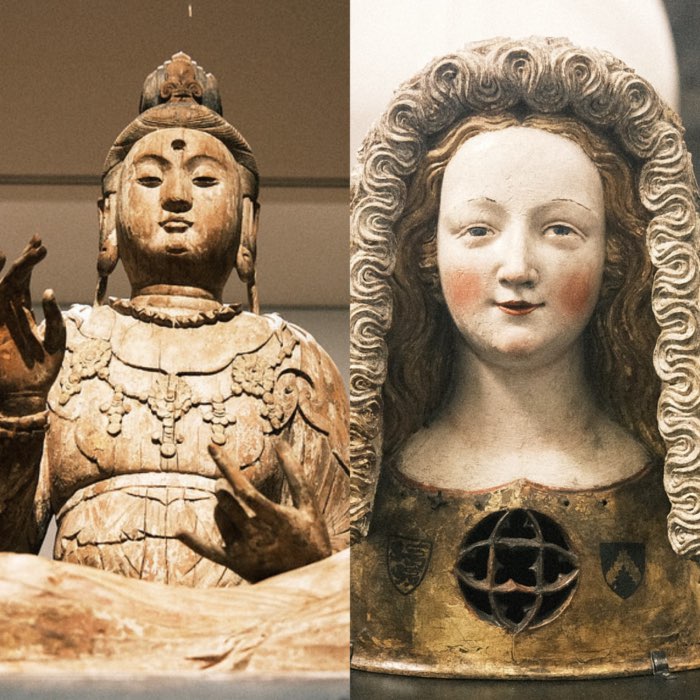East and West: Finding common grounds in distinct artistic traditions
I recently visited the Museum of East Asian Art and the Museum Schnütgen for European Medieval Art, both in Cologne. Having explored these museums in quick succession, I was struck by both the contrasts and surprising parallels in the artistic expressions of East and West.

In the Museum of East Asian Art, I came across a bronze statue of a Bodhisattva, a Buddhist figure that is on the path to enlightenment. The statue was exemplifying the serenity and spiritual depth characteristic of Eastern philosophy. As I observed it, the intricate detailing and the poised posture of the figure seemed to silently communicate a deep understanding of transcendence. I’m by no means an art expert. However, my personal experience led me to feel a sense of peace, almost as if the statue itself was imparting a fragment of its wisdom and compassion to the viewer.
In the Museum Schnütgen, my eye fell on a small sculpture of the long-suffering Jesus in the arms of his mother Mary. The sculpture was a powerful depiction of pain, sacrifice, and motherly love, and struck a different, yet equally profound chord. This representation of Western religious art, so stark in its depiction of human suffering, was a poignant contrast to the serenity of the Bodhisattva I had observed earlier.


Top: A bronze sculpture of a Bodhisattva, from the exhibition “Silber für Tsingtau”, Museum für Ostasiatische Kunst, Cologne. Bottom: The Virgin Mary with the dead Christ, Museum Schnütgen, Cologne.
It was fascinating to note that while the two sculptures came from vastly different cultural and religious backgrounds, both had the ability to deeply touch the viewer. In one, there was an offering of peace and a path to enlightenment, and in the other, a raw display of sorrow and sacrifice. Yet both, in their own unique ways, evoked feelings of compassion, introspection, and an appreciation for the vast spectrum of human experience that art can portray.
Amidst these contrasts in expression, I discovered similarities too. In both museums, I encountered wooden statues – one of Guanyin, the Bodhisattva of Compassion, from the East and another of a martyred saint from the West. Yet, what was truly captivating was the expression carved into their faces by the hands of their respective artists. Despite the vast geographical and cultural differences, both statues exuded an undeniable aura of compassion and understanding, making them seem universally relatable. The gentle curves of their smiles, the kindness and calm in their eyes, all seemed to tell a tale of empathy, strength, and a profound connection to the human experience. Intriguingly, despite their disparate origins, both sculptures emanated a sense of compassion and equanimity suggesting that the human experience of empathy and resilience transcends cultural boundaries.


Top: Seated Bodhisattva Guanyin (the Bodhisattva of Compassion), willow wood, Shanxi Province, China, Loa or Jin Dynasty, 11th-12th century, Museum für Ostasiatische Kunst, Cologne (photo from an earlier visit). Bottom: Reliquary bust with a ruffled nebulé-headdress, Cologne, around 1350, Museum Schnütgen, Cologne.
Throughout my visits to both museums, I was constantly reminded of the universal language of art. To a layperson like myself, art transcends geographical boundaries, religious beliefs, and historical contexts, speaking directly to the core of human experience. Whether it be through the calm visage of a Bodhisattva or the sorrowful gaze of Mary, art has an unmatched ability to communicate, resonate, and inspire. I found myself pondering the myriad ways in which art as creative expression reflects and influences our perceptions of the world. While I may not be an expert in art history or theory, these visits underscored the notion that art truly is for everyone, irrespective of religious and culture backgrounds – a medium that invites interpretation, fosters understanding, and challenges our perspectives.
You can find the photos from both museum visits in the Weekend Stories of August 2023.




















comments